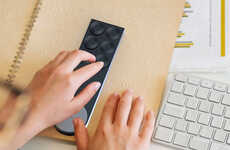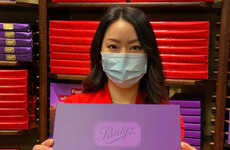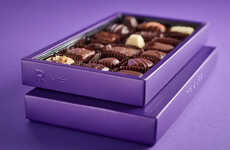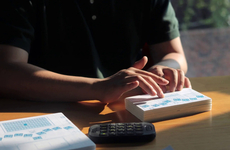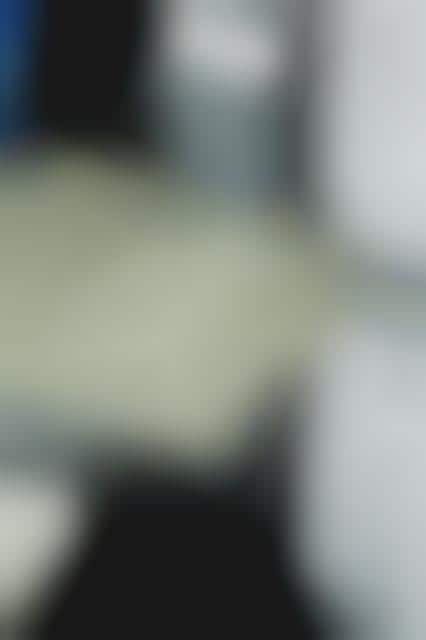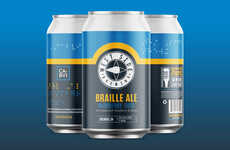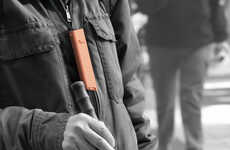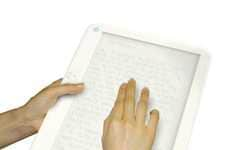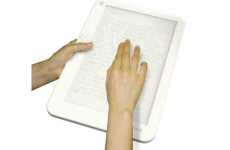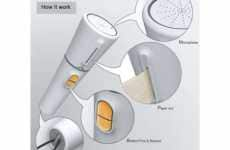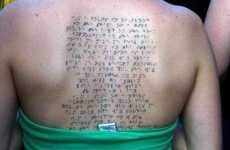
AccuBraille Adds Dots Everywhere
Anton M. Steeman — April 16, 2008 — Art & Design
AccuBraille is a new module which enables the embossing of Braille dots on all sorts of packages. Braille is now mandatory in the EU on pharmaceutical packaging. This was enough for Bobst, the well-known Swiss manufacturer of cardboard processing machines, to dedicate a team of 5 people for 18 months to develop an in-line solution.
The result is the AccuBraille, a revolutionary module which can be mounted after the Accufeed of new Alpina II and Mistral folder-gluers or installed as a retro-fit. The AccuBraille meets the converters feel that embossing of Braille is more cost efficient on the folder-gluer. The decision to apply Braille embossing in the folder-gluer brings several benefits: the run-ability of the gluer is improved as the Braille is applied after the feeder, the set-up of tools takes less than 5 minutes and no additional staffing is required. Further, it brings with it the possibility of applying embossing very close to cut or folding edges, on any of the four panels of the blank.
The device is made up of a rotary embossing unit including an embossing depth control system. The AccuBraille is able to run at up to 75,000 boxes per hour or a speed of 240 meters per minute, depending on the blank pitch. This in itself presented several challenges, since the gap between each box is always different. The system works according to the Marburg Medium standard, with a maximum of 4 lines and will handle materials ranging from 200 to 500 gr/m2. In addition, the tolerance is +/- 1 mm in all directions.
There is evidence that Braille will also soon need to be embossed on high quality food packages (chocolate/biscuits) as well as onto wine labels.
The result is the AccuBraille, a revolutionary module which can be mounted after the Accufeed of new Alpina II and Mistral folder-gluers or installed as a retro-fit. The AccuBraille meets the converters feel that embossing of Braille is more cost efficient on the folder-gluer. The decision to apply Braille embossing in the folder-gluer brings several benefits: the run-ability of the gluer is improved as the Braille is applied after the feeder, the set-up of tools takes less than 5 minutes and no additional staffing is required. Further, it brings with it the possibility of applying embossing very close to cut or folding edges, on any of the four panels of the blank.
The device is made up of a rotary embossing unit including an embossing depth control system. The AccuBraille is able to run at up to 75,000 boxes per hour or a speed of 240 meters per minute, depending on the blank pitch. This in itself presented several challenges, since the gap between each box is always different. The system works according to the Marburg Medium standard, with a maximum of 4 lines and will handle materials ranging from 200 to 500 gr/m2. In addition, the tolerance is +/- 1 mm in all directions.
There is evidence that Braille will also soon need to be embossed on high quality food packages (chocolate/biscuits) as well as onto wine labels.
Trend Themes
1. Braille Packaging - The development of the AccuBraille module for embossing Braille on packaging presents an opportunity to innovate packaging industry by enabling embossed Braille on various types of packages.
2. Automated Embossing Systems - The development of the AccuBraille module highlights the opportunity to innovate in automated embossing systems, enabling quick and efficient embossing processes across multiple types of packaging materials.
3. Accessible Product Packaging - The increasing requirement for Braille printing on product packaging poses an opportunity to create more accessible product packaging options that can be used by people with visual impairments.
Industry Implications
1. Printing and Packaging - Printing and packaging companies can utilize the AccuBraille system to innovate in their field and provide more accessible packaging solutions for their customers.
2. Food and Beverage - The requirement for Braille printing on food packaging presents an opportunity for food and beverage companies to provide more accessible products and to innovate in the packaging of their products.
3. Pharmaceuticals - The increasing legal requirement for Braille printing on pharmaceutical packaging presents an opportunity to create more accessible packaging options for people with visual impairments in the pharmaceutical industry.
2.5
Score
Popularity
Activity
Freshness

